Heinrich Bullinger (1504–1575), Zurich’s second-most important reformer and successor to Huldrych Zwingli, left behind a vast body of correspondence of around 12,000 letters.
The letters are an invaluable source for studying the history and culture of Zurich, Switzerland and the whole of Europe. The UZH Foundation raised funds for this major digitalization project and secured its financing – thanks to donations from several foundations and private individuals. The Bullinger Digital project aims to make all these letters digitally available by the end of 2022. Initial milestones have already been achieved.
Most of the letters are stored in the Zurich State Archives and the Zentralbibliothek Zürich. The Bullinger Digital project aims to add all of the reformer’s letters, including their metadata, to a database and make these data available to the public for free. In the past, researchers involved in the project have created index cards containing metadata (e.g. date, sender, recipient and storage site) to avoid losing track of the progress made. These index cards were added to the database using an optical character recognition (OCR) program. The conversion of the index cards, some of which were handwritten, had some glitches, and many volunteers had to go over the digitalized texts and correct the program’s reading errors by hand.
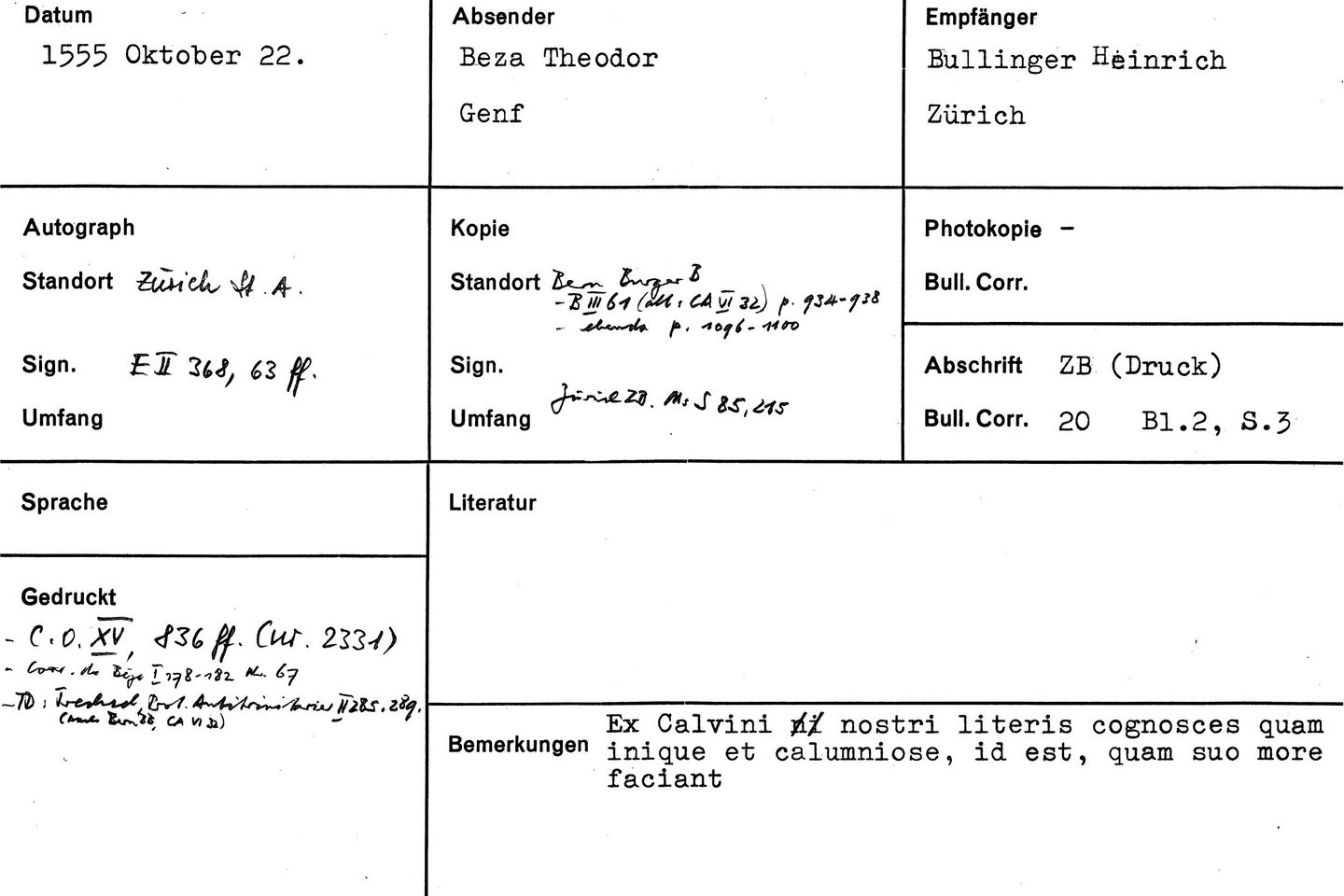
The website with Bullinger’s letters has already been made available as a beta version. There are still many letters with incomplete information that are yet to be scanned, transcribed or translated. The website is updated and expanded on an ongoing basis.
An interactive map enables users to quickly see where the letters were sent from and to. Clicking on individual regions brings up a list of all the letters that can be found there.
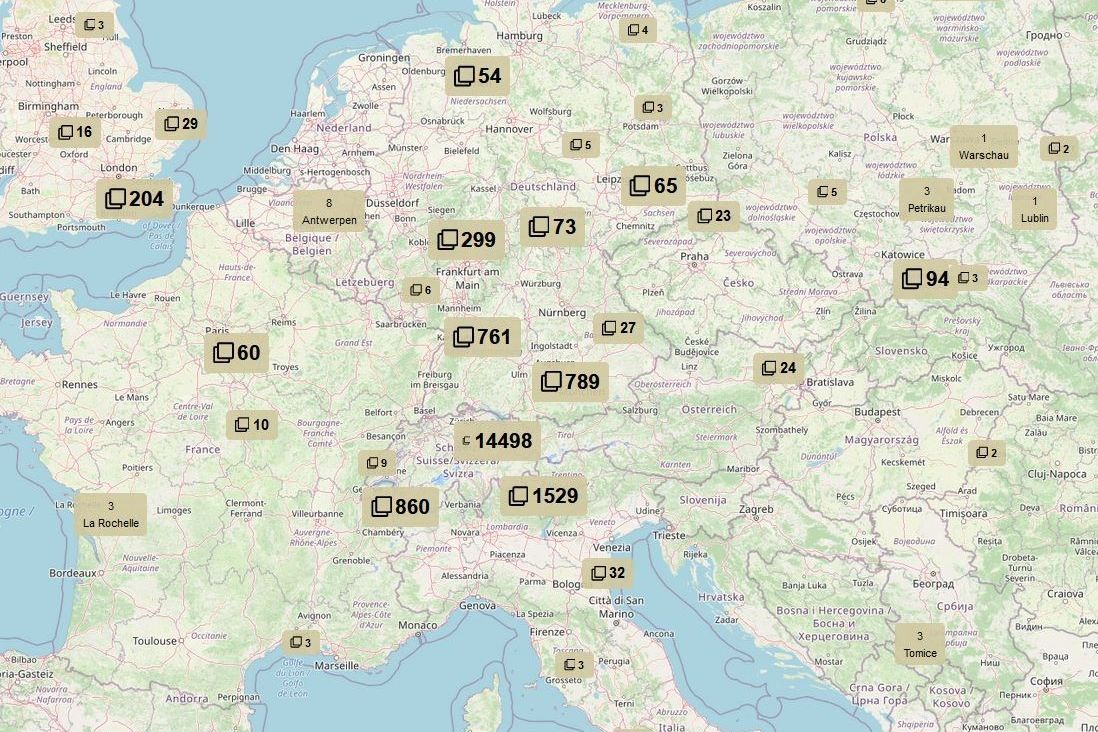
In addition to the map feature, navigation is also possible through a list index, enabling users to list and search letters by person.
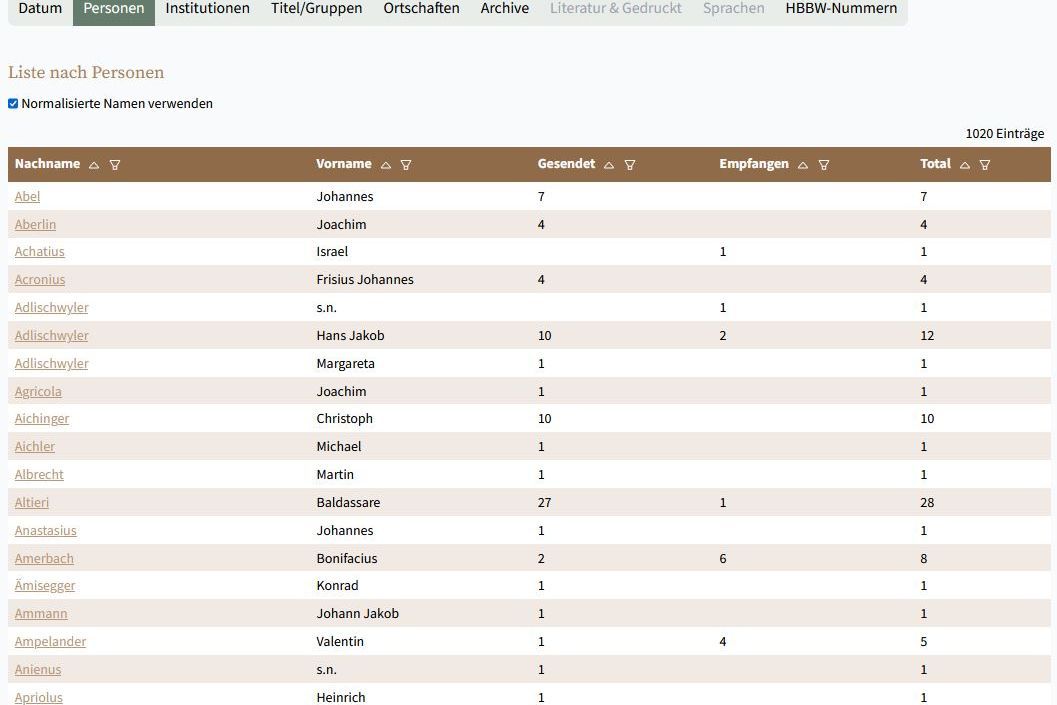
The detailed view of a letter features the following information:
This letter sent by Oswald Myconius in 1541 contains all of the aforementioned information on the website:
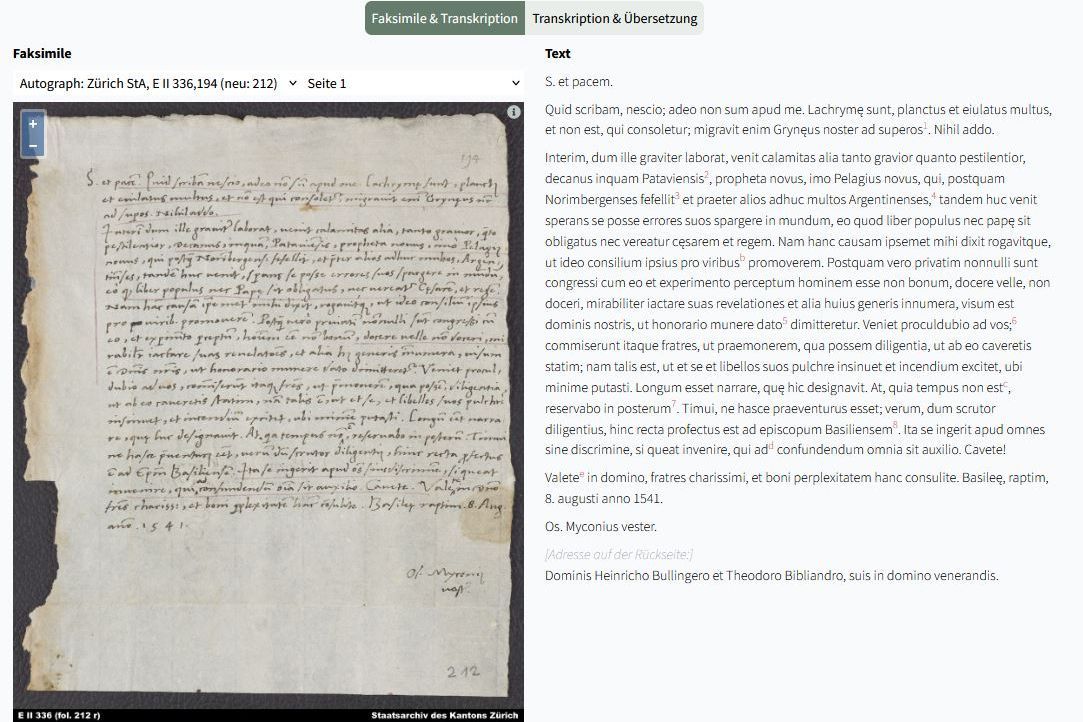
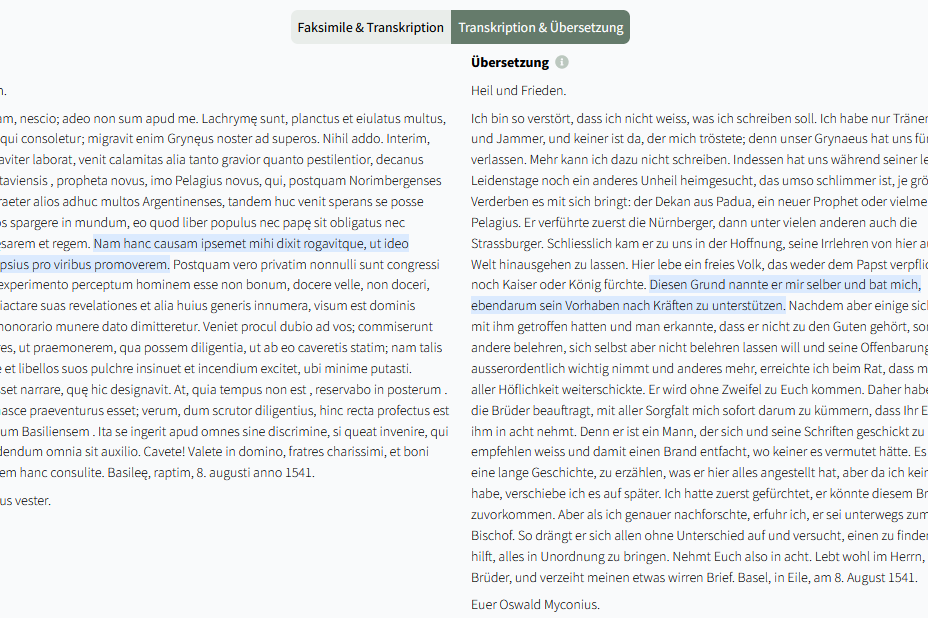
Around 3,000 letters are yet to be transcribed. A key component – and major challenge – of the Bullinger Digital project lies in automatic handwriting recognition technology using artificial intelligence. Since the letters were written by many different people and the Latin and Early New High German characters also differ, the program has to be able to process many different kinds of handwriting. And this inevitably leads to errors.
The error rate currently stands at 8.6 percent, but the goal is to reduce this rate to below 5 percent.
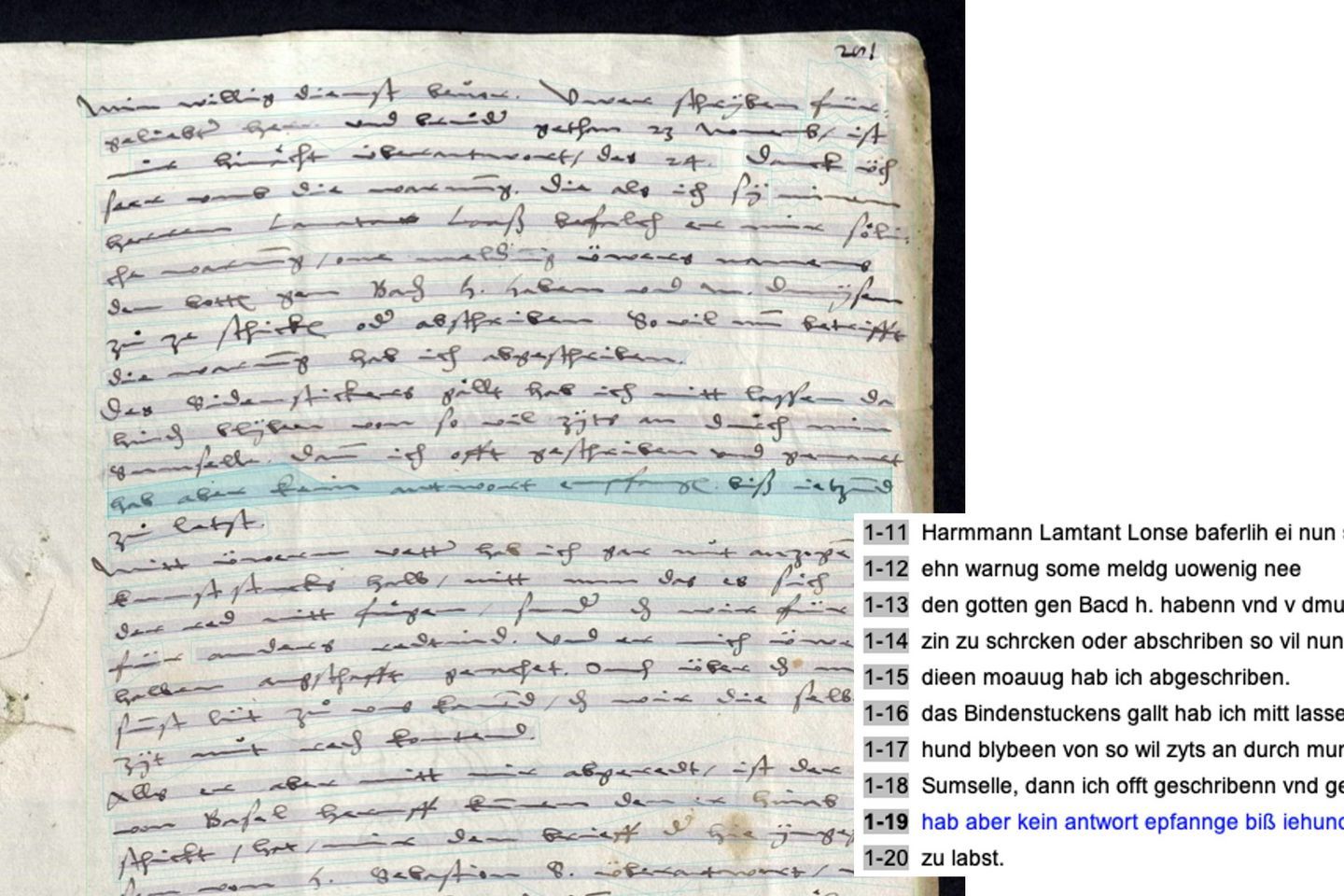
Last year, the project’s researchers scanned some 1,000 letters (approx. 3,500 pages) from the Zentralbibliothek Zürich and 3,100 letters (approx. 9,900 pages) from the Zurich State Archives. Their work continues, with the aim of having digitalized all letters by the end of 2022.
